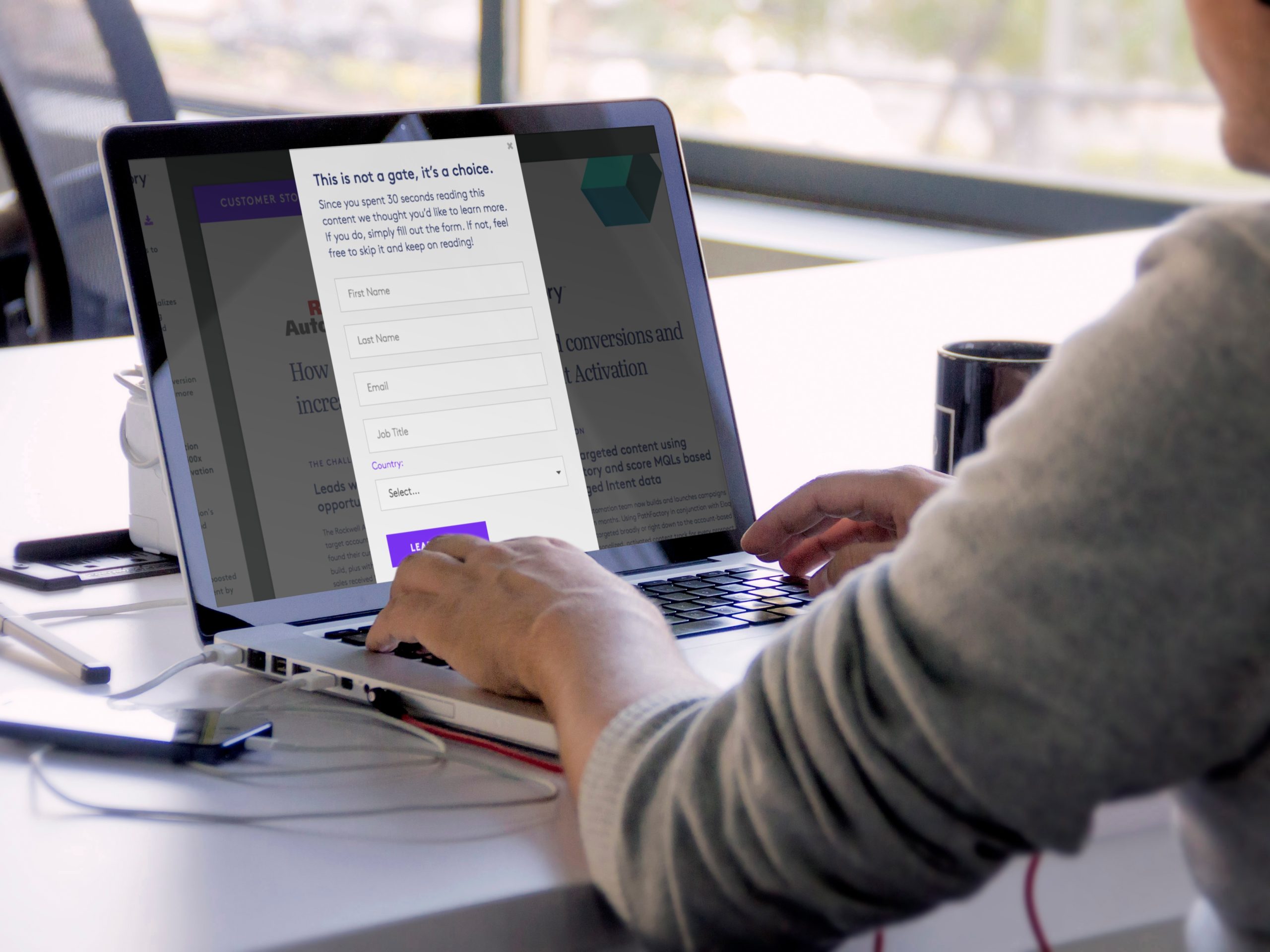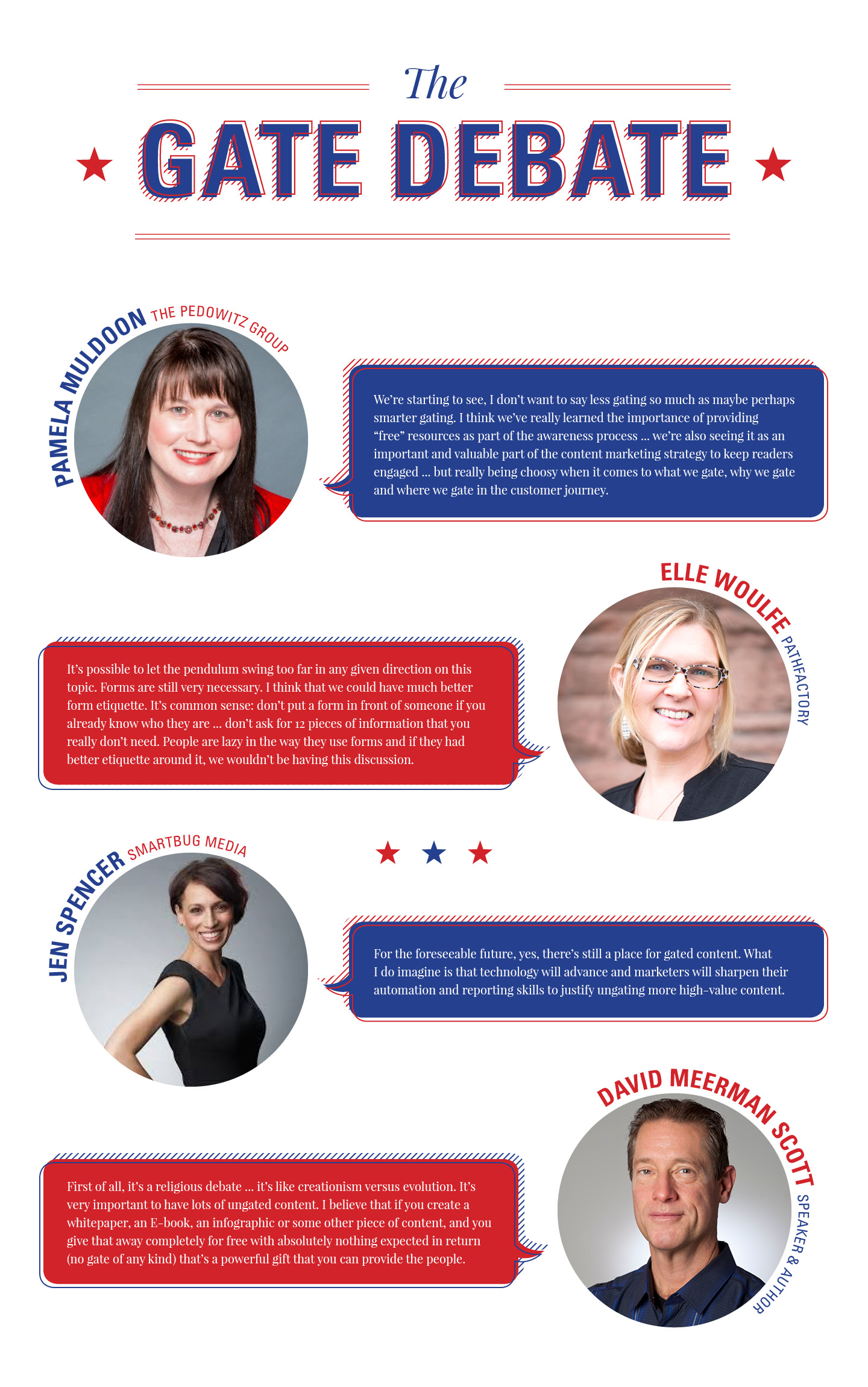The debate around gating or ungating content has been a topic of conversation among marketers for many years. It’s easy to understand why as gated content plays a crucial role in lead generation. However, there are growing benefits of ungating content, as well, according to experts, especially in specific stages of the buyer’s journey.
“I still see most marketers relying on gated content to drive on-site conversions, particularly at the consideration stage,” said Jen Spencer, VP of Sales & Marketing at SmartBug Media, in an interview with Demand Gen Report. “We see most ungated content available for buyers during the awareness and decision stages.”
To no surprise, B2B buyers prefer easily accessible content. Demand Gen Report’s 2018 Content Preferences Survey found that 66% of buyers strongly agree that companies should make it easier to access their content — from fewer form fields to even single-click content options.
Even though they have their personal preferences, experts note that having a combination of both gated and ungated content is the most beneficial for both the company and the buyer.
“From a buyer’s perspective, in an ideal world, no content would be gated,” said Spencer. “We’re not there yet, and we may never be. Most marketers rely on gated contact to yield conversions. However, I still believe in a healthy mix of both gated and ungated content.”
However, there is experts suggest new beast practices and etiquette to consider when establishing whether to add a form to content or not:
If gating …
- Make sure the gated content is of high value;
- Don’t ask for information you already know, or that you can gain through a data append; and
- Be honest and direct on the landing page — tell people why you’re asking for their information.
If not gating …
- Ungate content that will educate and get the reader excited about your company; and
- Offer up additional gated content within an ungated piece — such as a webinar registration form — that will prompt the reader to continue to learn and provide their information.
“I believe that giving away content completely free is very, very important for building a fanbase,” said author and speaker David Meerman Scott in an interview with Demand Gen Report. “Now, that being said, I do believe there are opportunities for when you can ask for contact information, but that should be at the point where people are willing and eager to provide that information. That’s not at the first instance of when they are interested in something that you have to offer. That’s after they’ve had a chance to be exposed to your ideas.
“So, what I always suggest is to make that first piece of content completely and utterly free. Give it as a gift, and then later on, you have the opportunity to offer something else that’s valuable in exchange for some contact information and I call that kind of a hybrid approach.”
Time-Based Forms Offer The Best Of Both Worlds
A happy medium between gated and ungated content is the idea of a “time-based form” that pops up after the reader has spent some time with a specific asset. Content activation platforms such as PathFactory can track how people are engaging with content and then, at the right time, have a form appear asking for more information in exchange for the opportunity to continue reading.
“See how people are engaging with your content; see if they’re interested, and once they’ve spent some time with it, use a time-based form to then say, ‘Hey, this looks like something of value to you. If you’d like to continue reading it, why don’t you tell us a little bit about yourself?’” said Elle Woulfe, VP of Marketing for PathFactory, in an interview with Demand Gen Report. “Nobody wants to be met with a 12-question form before they’ve even seen the thing that they are trying to access. This ‘give to get’ philosophy of gating gives your buyer a lot more value up front and makes it easier to get that conversion.
“We see our customers doing really interesting things with time-based forms and using that content engagement data as a way to serve a conversion experience when it’s appropriate, instead of slamming it in someone’s face every time they turn around,” she concluded.
For example, Invoca revamped its ABM program to deliver custom content experiences. But the company needed to differentiate their efforts from traditional demand gen programs.
“We were structuring our ABM programs not that much differently than how were treating traditional inbound demand gen programs,” said Ari Echt, Director of Account-Based Marketing for Invoca. “We didn’t have the resources available to create custom content experiences. We relied on typical, gated landing pages and drove target accounts through those gated landing pages, which wasn’t conducive to a lot of self-education.”
After partnering with PathFactory, Invoca was able to create custom experiences for nurturing, as well as for events and webinars. Using time-based forms to collect reader information and allow them to educate themselves on their own terms, the company saw more opportunities and engagement.
“When we drive people to content that we’ve created through PathFactory, the average amount of time spent is 3X greater than when people go to our website and go to the normal gated experiences,” said Echt.
Revisiting Landing Page Etiquette To Promote Gated Content
Experts said that gated content and forms are still necessary, but the strategies around gating content should be revisited and marketers need to have better form etiquette.
A key component of gating content is the landing page in which the form is housed. But experts note that marketers oftentimes get too flashy with preview copy and over-promise on what’s exactly within the content. Pamela Muldoon, Campaign and Content Strategist for The Pedowitz Group, warns that this will turn potential prospects off.
“It happens quite a bit in the gating process,” she said. “Sometimes value is teed up really well but then we download it and say, ‘Um, is this it?’ and you feel disappointed. We have to remember that it only takes that one bad impression to possibly eliminate any future opportunities. The art of copywriting and the art of direct messaging is still a highly required skill in our space and I think, sometimes, we downplay it for the marketing profession.”
Muldoon suggests experimenting with different landing page formats and A/B testing them to gauge what works and what doesn’t.
“What we suggest clients do is A/B test landing pages with text … or have one with a video saying the same thing,” said Muldoon. “Use different formats to drive them to content. If you’re speaking versus having me read it, will I get something different? … Is it a different feeling, so that I actually download the content because I feel engaged differently? Develop an A/B testing methodology, so you can let the data start to help you decide where your strengths are and where your challenges are, or where you need to eliminate some of your initiatives.”








